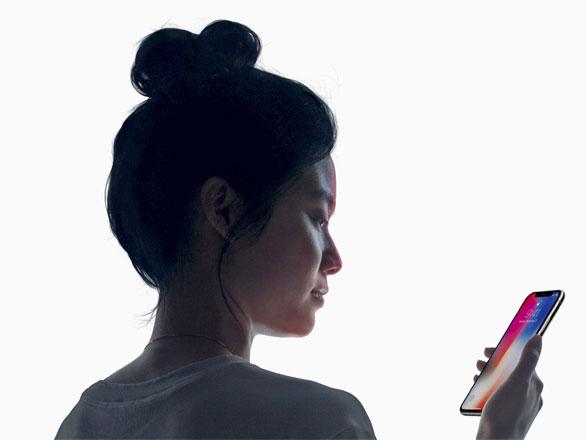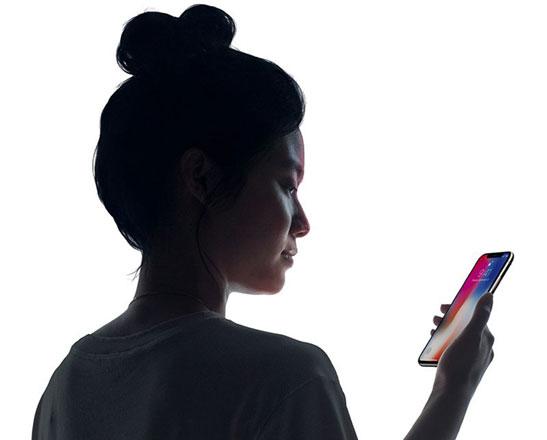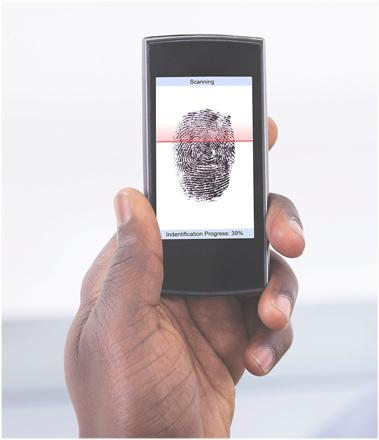You are here
Are you OK with using your face to unlock your iPhone?
By Los Angeles Times (TNS) - Sep 17,2017 - Last updated at Sep 17,2017

Photo courtesy of wordpress.com
Your passcode can be hacked, but your face is yours and yours alone. That is the thinking behind Apple’s latest security measure, which is more high-tech and a bit more intimate than anything else on the market.
With Face ID, which Apple unveiled on Tuesday, owners of the company’s new top-of-the-line iPhone X will be able to unlock their phone, pay for products and use mobile apps just by glancing at their device.
“Nothing has ever been simpler, more natural and effortless,” Phil Schiller, senior vice president of worldwide marketing, said during Apple’s first product launch at its new headquarters in Cupertino, Calif. “Face ID is the future of how we unlock our smartphones and protect our sensitive information.”
Though still a novel concept for many Americans, biometric technology — which includes face, fingerprint, iris and retina recognition identification systems — has been a hotbed of research this decade. With Apple’s backing, the field just got its most high-profile boost, yet, and could soon become the industry standard, even if many consumers aren’t quite comfortable with the concept.
Technologists tout a futuristic experience that is more secure than entering a passcode. They predict the technology could one day be used to unlock cars, withdraw money from ATMs or enter connected homes.
“You can share your password. You can share your car keys. But you can’t share your biometrics,” said George Avetisov, chief executive of biometric security firm HYPR Corp.
With Touch ID, Apple’s fingerprint technology, the chance that a random person could unlock your phone with his or her fingerprint is 1 in 50,000, Apple said; with Face ID, it is one in 1 million.
Both systems store biometric data locally on the device rather than on a centralised server that could be targeted by hackers. That makes biometrics attractive from a privacy and security standpoint, Avetisov said.
Revenue for the biometrics scan software industry is projected to reach $5.5 billion this year, with estimated growth of 5.2 per cent annually for the next five years, according to a May report from IBISWorld. The market research firm noted “prolific expansion” since 2012 and named biometrics one of the nation’s five top performing niche industries.
Facial recognition technology has slowly crept into everyday life, most notably with personal photos. Upload a picture to Facebook, and the social media giant suggests friends to tag. Google and Apple can automatically identify faces in photos, making it easier for users to search their photos for a specific friend or relative.
But Face ID takes facial recognition a step further. It works by relying on an advanced suite of tech — including an infrared camera, flood illuminator, front camera, dot projector, proximity sensor and ambient light sensor — packed into the front of the new iPhone X, which starts at $999.
To set it up, hold your iPhone X in front of your face and move your head around slowly. That becomes the stored version on your phone.
To use it, glance at the front-facing camera. The dot projector beams out more than 30,000 invisible infrared dots, and the infrared camera captures an image.
Apple uses the infrared image and dot pattern and pushes them through neural networks — a kind of machine learning model — to create a mathematical model of your face and then checks that model against the stored image captured during the setup phase. Once it detects a match, the phone unlocks; Face ID will also work with Apple Pay and third-party apps.
Face ID is sophisticated enough to work in the dark, and to learn your face under different circumstances — so go ahead and wear those funky glasses or grow that hipster beard.
Schiller said Apple also worked hard to ensure the technology “can’t be easily spoofed”. Photographs will not fool it, and Apple even worked with professional mask makers and makeup artists in Hollywood to protect against attempts to beat Face ID, he said.
The tech also requires user attention — your eyes have to be open, and you cannot be looking away (meaning there is little risk of intrusion while you sleep).
Identical twins may trip up the system, but for them and anyone else averse to using their faces, the iPhone X can still be unlocked using an old-fashioned passcode.
Although Apple said Face ID will provide users with more security, the technology also raises questions about unauthorised uses, particularly by law enforcement.
Last year, federal officials dropped their legal fight against Apple after figuring out a way to unlock the iPhone used by an assailant in the 2015 San Bernardino terrorist attack. Apple had refused to comply with agencies’ request to engineer a way around the iPhone’s security measures, saying that doing so would set a dangerous precedent.
Ultimately, FBI technology experts were aided by an outside group, which provided a backdoor technique to extract information from the phone. That left a vexing debate over a user’s privacy versus collective security unresolved.
With Face ID set up, it is plausible that law enforcement could use a suspect’s face to unlock his or her iPhone, said Patrick Moorhead, principal analyst at Moor Insights and Strategy.
Fatemeh Khatibloo, an analyst with Forrester Research, said authorities in the US cannot compel you to provide your PIN or passcode. Faces, on the other hand, are public, so Face ID is functionally less private from a legal perspective, she said.
Apple did not respond to a call for comment on the matter; the FBI referred an inquiry to the Department of Justice, which said it did not have an immediate comment.
Many big tech companies have invested in facial technology in recent years. Facebook last year acquired FacioMetrics, which let smartphones analyse facial images in real time, and in 2015, Snapchat bought Looksery, a startup that applied filters to users’ faces.
Apple reportedly acquired two companies that were developing facial recognition technology: Israeli startup RealFace and San Diego startup Emotient, which uses artificial intelligence to read facial expressions and emotions. According to Crunchbase, RealFace was acquired this year and Emotient was bought in January 2016.
Related Articles
WASHINGTON — Apple will let you unlock the iPhone X with your face — a move likely to bring facial recognition to the masses, along with con
SAN FRANCISCO — It sounds like a great idea: Forget passwords, and instead lock your phone or computer with your fingerprint.
Samsung’s upcoming Galaxy S5 smartphone will be at least the third to have a fingerprint sensor for security but it’s alone in letting you use that for general shopping, thanks to a partnership with PayPal.
















